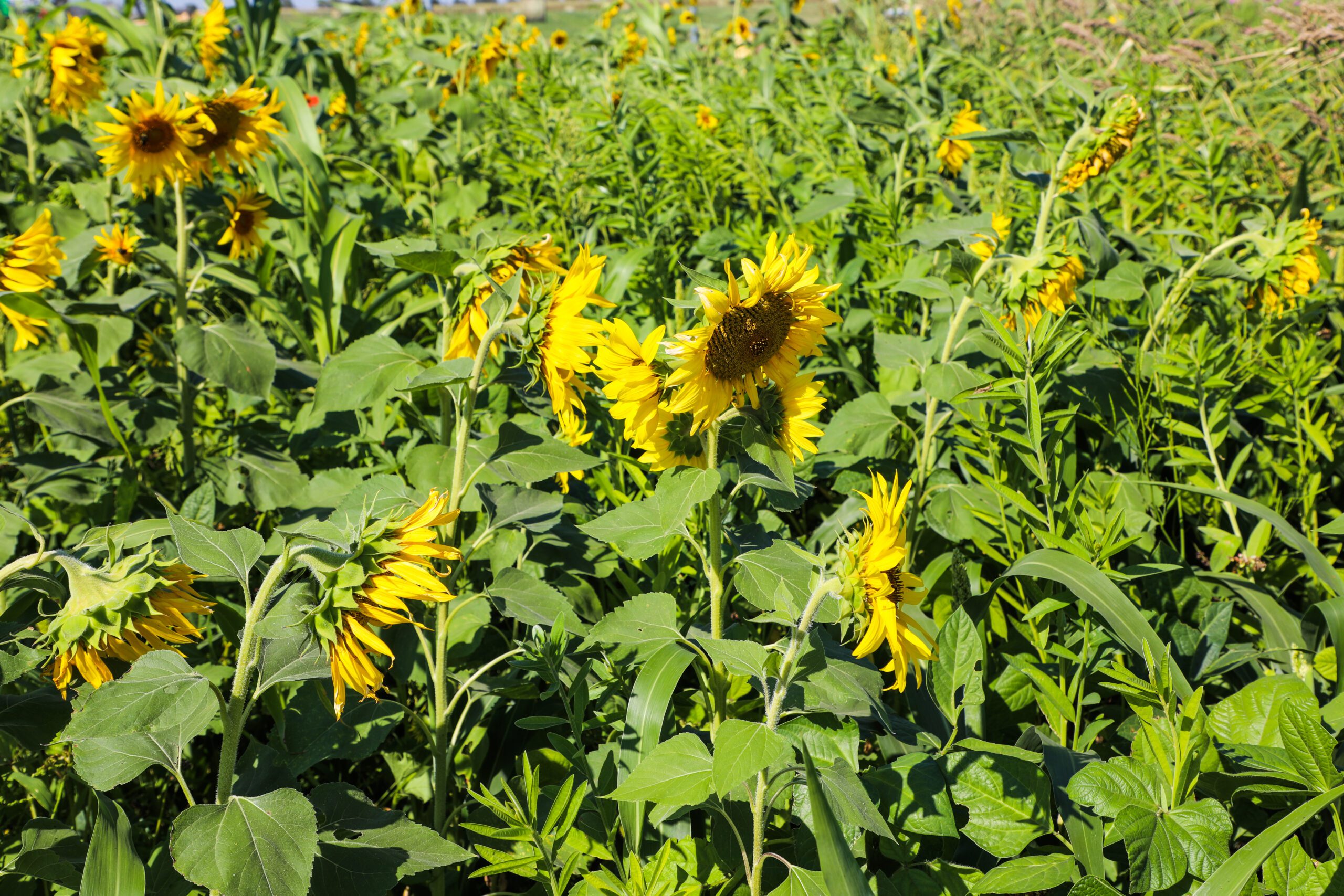As more farmers across the country are adopting cover crops, the need for understanding how to properly manage covers increases. One of the most common objections towards cover crops is that they can get out of hand and become a nuisance – just like weeds. While this can certainly be the case without proper management, there’s much to be said about how we can utilize cover crops to fill the niche of weeds to eliminate their presence altogether.
The natural role of weeds
Weeds are known as the scab of the Earth. Laying dormant in the soil, these guys are ready to cover and protect soil as soon as any type of disturbance occurs. If left to mature, they produce impressive amounts of seeds with clever methods of ensuring their own survival. While all of this may sound threatening, the truth is that weeds are a part of a brilliant design, one that we can learn quite a lot from to improve our soils and grow nutrient dense crops.
If you can’t beat ‘em, join ‘em.
Farmers all across the country spend countless hours and resources battling weeds each year but soils still want to be covered and no amount of herbicide or diesel fuel will change that. Cover crops offer a solution for keeping soils covered while outcompeting weeds that would otherwise threaten the success of your cash crop.
One of the best ways to suppress early season weeds is to plant cereal rye in the fall. The plant’s growth will slow down over the winter and then pick back up when soil temperatures warm up in the spring, just in time for those early season weeds to begin germinating. The rye will compete with the weeds for sunlight, moisture and nutrients, particularly excess nitrogen which will knock back nitrate loving weeds like pigweed, lambsquarter and kochia. The competition decreases the amount of weeds that germinate and weakens the ones that do. Cover crop residue will help protect soils and prevent future weeds. Tack on some extra soil health bonus points if you can plant your rye early enough to include some legumes and brassicas for a diverse mix.
When it comes to herbicide resistant weeds, cover crops can save you loads on chemical bills. The cover crop competes and inhibits the weed’s growth and then we can easily terminate those cover crops with a fraction of the herbicide power that would be required to kill the resistant weed if left unchallenged.
Don’t let your cover crop turn into a “weed”
Most people define a weed as a plant growing where they don’t want it. As long as we are thoughtful about species selection with volunteer potential in mind and have a good termination plan in place, the risk of cover crops becoming a “weed” is very low. That being said, if cover crops are improperly managed and left to go to seed, it can become problematic.
Here are a number of considerations to keep in mind before things get to this point!
- Know your termination date. Understand how long your cover crop will grow and select species that won’t reach maturity within that time frame to prevent unwanted seed.
- Utilize male sterile traits. We carry sorghum sudangrasses and millets that have been bred to not produce seed.
- Make sure you have a fool-proof plan for termination.
- Successful chemical termination will depend on a number of factors including herbicide used, growth stage of the cover crop and temperature at the time of application. Be sure to read product labels carefully for proper application.
- To have success with roller crimping, it’s all about timing. Consult with our team to select the right species for this type of mechanical termination.
The difference between weeds & covers
One of the major advantages of covering soils with cover crops instead of weeds is that cover crops have been cultivated for traits that we can manage with predictable accuracy. There are several domesticated cover crop species like sunflower, chicory, vetch and korean lespedeza that have wild “weed” counterparts that go by the same common name, giving some growers hesitancy in considering them as cover crops. Fortunately, there are vast differences between wild varietals and those that we grow and sell as cover crop seed.
Chicory, for example, is a highly regarded forage species known for its medicinal value for grazing livestock. In some parts of the country, wild chicory is seen as an invasive species because of its deep taproot and extreme hardiness. In this case, the wild varieties have developed much wider and deeper taproots, making them difficult to manage once established. For species like chicory, context is important and we would only recommend it for a perennial grazing scenario.
Sunflower, for example, is an excellent broadleaf cover crop well known for its deep taproot, palatability and versatility. The Black Oil Sunflower variety differs greatly from the wild sunflower that farmers often battle in their fields. With a much larger seed bred for oil production, you don’t have to worry about black oil sunflower seeds sticking around for too long as they are a tasty and tempting treat for most birds, insects and rodents. Sunflowers are also very susceptible to herbicide.
What we can learn from our weeds
As you’re working to suppress weeds using covers, take note of what types of weed species tend to proliferate in your soils as it is often an expression of what’s going on belowground. For example, if you’re seeing primarily early successional weeds that thrive in bacterially dominated soils, you might want to consider planting cover crops that are mycorrhizal hosts, like flax and oats. There are many great teachers who speak on this topic and one good resource is “When Weeds Talk” by Jay L. McCaman
Give our team a call today to talk through your cover crop options to minimize weed pressure next spring!
